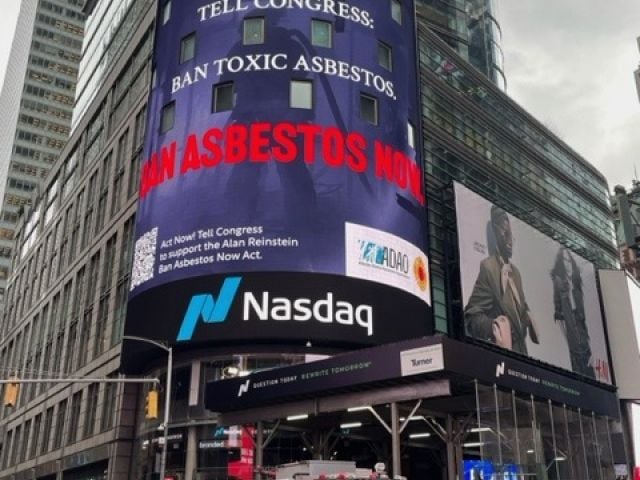
By Elaine Shannon
People think asbestos, a known carcinogen and cause of lung disease, has been banned - and it has, in about 40 countries.
But not here in the United States, where, according to the U.S. Geological Survey, asbestos imports increased between 2007 and 2008 by nearly nine percent, to 1,880 tons. It is still being used in consumer products such as joint compounds and some construction materials. Asbestos can also be found in brakes and clutches of older vehicles, older buildings and as a contaminant in some vermiculite.
On Nov. 11, 12,000 members of the American Public Health Association (APHA), meeting in Philadelphia, passed a resolution urging Congress to ban "manufacture, sale, export or import of asbestos-containing products."
The measure, coordinated with the Asbestos Disease Awareness Organization, which represents victims of asbestos-related disease, calls for other measures to minimize work and public exposure to asbestos, as when asbestos seams are unearthed during road and building construction or aged buildings are renovated or demolished. As well, it urges the U.S. to join with other nations in a global ban on asbestos mining, and manufacturing, and exports of products with asbestos.
"Any fiber of asbestos is potentially harmful to health," said Celeste Monforton, DrPH, MPH, a George Washington University professor who, as chair of the APHA Occupational Health & Safety Section, helped move the asbestos resolution through the APHA assembly. "We don't need another generation or two of victims because this stuff is still out there."
Monforton points out that many people who are now being diagnosed with asbestos-related disease have never worked in asbestos-handling industries. Some were exposed to asbestos fibers as children, because their fathers worked in heavy industry, construction or as vehicle mechanics and brought asbestos home on their work clothes.
It's crucial, she says, that people be protected from asbestos exposed during highway construction, digging for new housing developments and in sand, gravel and vermiculite pits.
Environmental Working Group has published a number of research reports analyzing current asbestos hazards. Among them:
- Asbestos Hotspots - List of locations where asbestos-contaminated vermiculite was shipped by W.R. Grace Company, later
- A Slow Death In Texas - Disclosed rising numbers of asbestos deaths in Texas
- Asbestos - Think Again - An overview of the national toll of asbestos-related disease
- DisGraceful -- W.R. Grace documents showing that workers in at least 14 W.R. Grace insulation factories were exposed to asbestos dust.
- EWG Letter in Support of the Ban Asbestos in America Act of 2007



